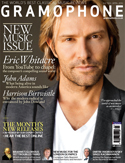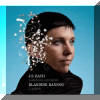Texte paru dans: / Appeared in:
*

GRAMOPHONE (04/2012)
Pour s'abonner /
Subscription information
Zig-Zag Teritoires
ZZT 111001 (2CD)

Code-barres / Barcode:
3760009292529
Consultez toutes les évaluations recensées pour ce cd
~~~~ Reach all the evaluations located for this CD
Reviewer: Philip
Kennicott
Rannou’s new
Goldbergs and a reissue for her English and French Suites
The French harpsichordist Blandine Rannou is a charismatic artist, a
distinctive voice in a field crowded with technically immaculate but
intermittently inspired players. Supplementing her release of a new
recording of Bach’s Goldberg Variations, Zig‑Zag has issued a handsome
box‑set of her earlier Bach recordings, bringing together the 2001 French
Suites, the 2003 English Suites and the 2005 Toccatas. Taken together with
the Goldbergs, these recordings offer a sustained argument that, among the
many legitimate and fruitful approaches to the keyboard music of Bach, a
freely Gallic style is not only plausible but serves the German master
surprisingly well.
Rannou has tended to fare better with French critics than she has among English and American ones. Reviewing the English Suites in 2003, Jonathan Freeman‑Attwood admired the ‘grand solemnity in the resonant Ruckers‑Hemsch copy on which Rannou plays’ and her ‘cultivated classicism’. But it wasn’t a rave. There is, admittedly, something idiosyncratic about her artistry but I find it often charming, sometimes shocking in a revelatory way, and rarely if ever cold or didactic.
From the very first notes of her Toccatas, it’s clear that Rannou conceives them more in the spirit of the French unmeasured prelude than in the manner of either Frescobaldi or Buxtehude. The metre is elastic, notes are grouped together for gestural effect, long pauses are inserted for rhetorical purposes and an improvisatory spirit prevails. When order is needed, Rannou enforces it, sometimes with great drama, as in the entry of the fugue theme in the C minor Toccata (BWV911), which is announced as if bathed in a hard, penetrating, silvery light.
Though not so rhythmically freewheeling as the Toccatas, the dances of the English and French Suites indulge in other kinds of freedom. Ornament, though rarely cluttered, is profuse and imaginative, sometimes so much so that one imagines Rannou sketching these pieces (during the repeats) rather like a virtuoso draughtsman draws without lifting his pencil from the page. Intervals are filled up, the high and low points of phrases connected with elastic ribbons of invention.
All of this continues in her new traversal of the Goldbergs, where, if anything, the whimsy and finesse is even more welcome. The Aria is taken almost agonisingly slowly but, as each section is repeated, the reasoning behind the tempo becomes clear: Rannou is beginning the variation process even before the polonaise‑like snap of Bach’s Var 1, pouring into the interstices of the aria an extra, deeply personal elaboration. Dance‑ like movements, such as Var 7, have a bumptious energy that is delightful. All the luscious colours of her instrument, based on the Hemsch ravalement of a 1636 Ruckers, are exploited in the two‑manual variations. The contrasts in the instrument’s tonal quality and a fetchingly light and playful interpretation make Var 20 sound like a character sketch by François Couperin.
Bach of course admired Couperin,
and never has his music sounded so much in debt to the French master. Not
everyone will find this overlay of French style entirely convincing. The pulse
can get a bit seasick at times, especially when distorted for the insertion of
ornament. But these moments are rare. Far more memorable than the occasional
lapse is the sense that Rannou has found new realms of colour and new avenues of
seduction in these well‑trod works.
Cliquez l'un ou l'autre
bouton pour découvrir bien d'autres critiques de CD
Click either button for many other reviews


